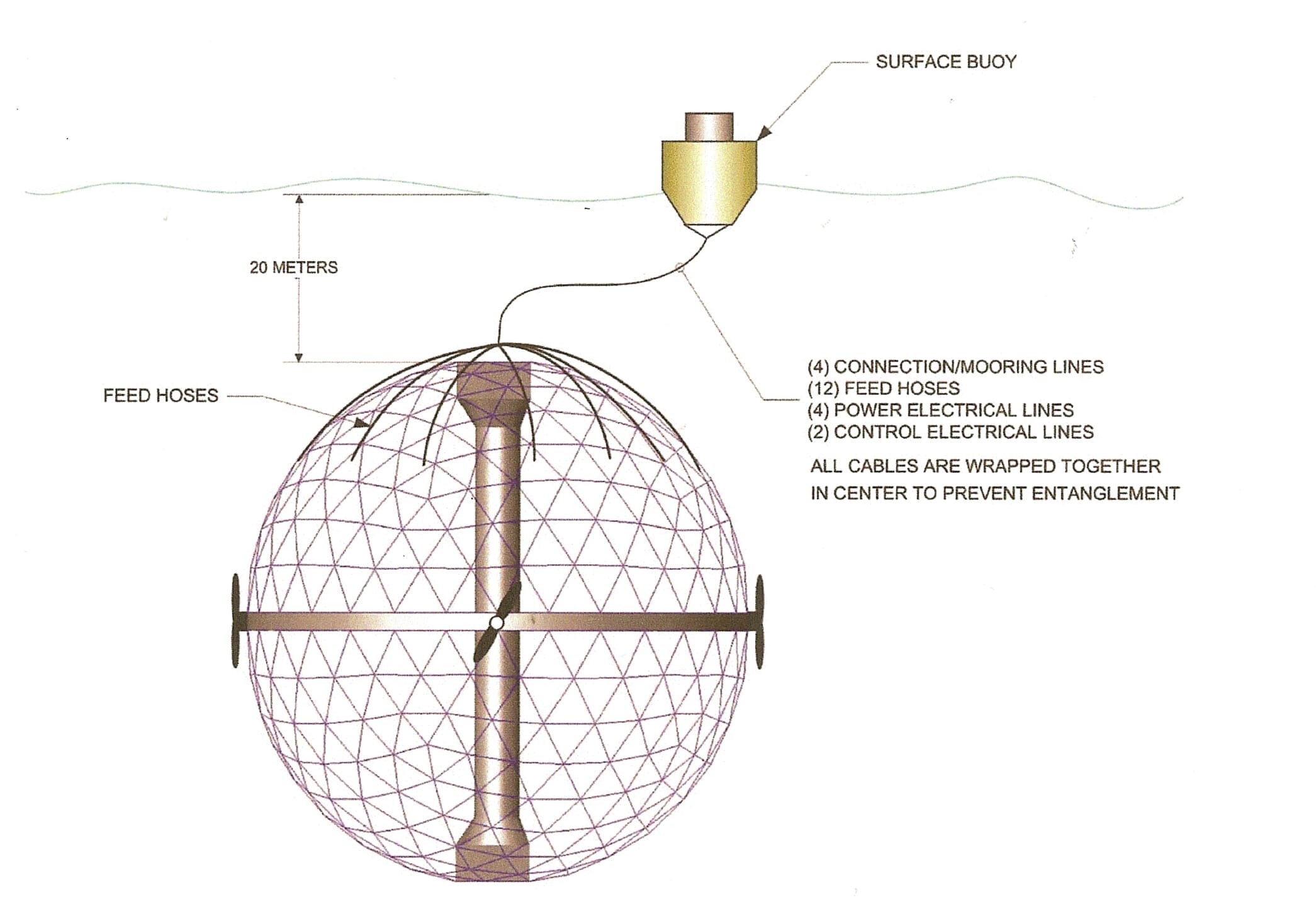The company has designed cages (see image below) which sit submerged in the water without being attached to the sea bed.

The cages are kept in place using thrusters coupled with GPS and command and control systems similar to what are used for unmanned aerial and underwater vehicles.
Each cage is around 82,500 cubic meters so they are able to support blue fin tuna as well as other large pelagic species.
"The design of the cage also allows for operation in deeper ocean water settings allowing for the large volume of clean water and current to quickly mineralise effluents and create a healthy environment for raising the fish," said Bill Spencer, CEO of the company, speaking to TheFishSite.
"The system also includes an automated feeder buoy that can hold 100 tons of feed dispensed automatically."
The patent characterises the company’s environmentally responsible system for growing seafood in the open ocean.
US and Philippine patents have been granted and the company is expecting patents in the EU, Japan and Australia to be granted soon.
Mr Spencer said: “This is an important value creating milestone for the company. We plan to use Oceanspheres to produce Yellow Fin Tuna. The company has been growing Yellow Fin Tuna brood stock in a specially designed tank in Hawaii since 2009."
"The company plans to sell and license Oceanspheres globally. The goal of the company is to demonstrate new fish farming technology that allows pelagic species such as tuna to be grown in deep ocean waters where constant currents and large volumes of clean water assure fish health and rapid mineralization of effluents.”
The Oceansphere was designed to have no significant impact on the ocean and surrounding environment. An Environmental Impact Statement required by permitting authorities confirmed the environmental benefits of the company’s approach. To do this, the Oceansphere adapts proven off-the-shelf technologies uniquely suited to largescale deep ocean fish farming necessary to meet future demand and achieve economic viability for fish farming operators.
The company has a 247-acre (one square kilometer) lease site 2.6 miles off of North Kohala on Hawaii Island. Twelve Oceanspheres are permitted to operate in the site producing 6,000 tons of yellow tuna per year. To distinguish our tuna in the marketplace it is being branded as King Ahi™.
“More than 21,000 acres of land and mass quantities of fresh water would be needed to produce the same amount of beef protein,” Mr Spencer said. “By farming protein in the vastness of the open ocean, we can be more much more efficient than land based protein production, use no land or fresh water and reduce the carbon footprint associated with traditional fishing methods, not to mention reducing impact on wild fish populations that are already severely stressed,” he said.
“Our goal is to demonstrate that you can move some types of fish farming out into deep water where larger farms can be constructed and environmental impact can be insignificant due to naturally occurring processes,” Mr Spencer said.
The deep ocean environment is also better for the fish resulting in low food conversion rations, better health and faster growth.
The company is privately funded and was formed in 2006 as a Delaware C corporation.
Its headquarters are in Honolulu. For more information go to: http://www.oceansphere.net.




